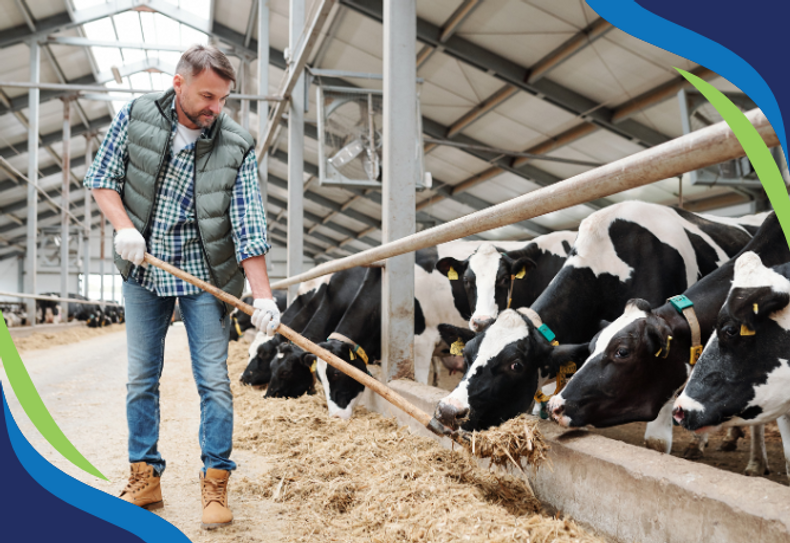Bird flu, particularly the H5N1 strain, is traditionally associated with avian species. However, recent outbreaks have shown that this virus can infect a broader range of animals, including dairy cows. Understanding the transmission pathways is crucial for preventing the spread and ensuring the safety of livestock and humans. Here’s how cows can get infected with H5N1:
Transmission Pathways
1. Direct Contact with Infected Birds
The primary mode of H5N1 transmission is through direct contact with infected birds or their secretions. Wild birds, often asymptomatic carriers of the virus, can transmit H5N1 to cows in several ways:
- Infected Droppings: Wild birds' droppings can contaminate the feed or water sources of cows. When cows ingest contaminated feed or water, they can become infected.
- Bodily Fluids: Contact with saliva, nasal secretions, or other bodily fluids from infected birds can also lead to transmission.
2. Environmental Contamination
H5N1 can survive in the environment for extended periods, especially in water and moist conditions. Environmental contamination plays a significant role in the spread of the virus to cows:
- Contaminated Water Sources: Ponds, lakes, or other water sources frequented by wild birds can become reservoirs for the virus. Cows drinking from these contaminated sources are at risk.
- Feed Contamination: Feed stored in areas accessible to wild birds can become contaminated. When cows consume this feed, they can contract the virus.
3. Indirect Contact via Farm Equipment and Personnel
The virus can be inadvertently transported into cattle environments through contaminated equipment, clothing, or footwear:
- Farm Equipment: Machinery and tools used in areas where wild birds are present can pick up the virus and transfer it to cattle facilities.
- Personnel: Workers moving between areas with infected birds and cattle farms can carry the virus on their clothing, shoes, or hands.
H5N1 infection in dairy cows can lead to significant health issues and economic losses. Health-wise, infected cows may exhibit symptoms such as decreased milk production, lethargy, fever, and reduced appetite. In severe cases, the virus can lead to death. Economically, reduced milk production and the need to cull infected animals can cause substantial financial strain on dairy farmers. Additionally, trade restrictions may be imposed on regions with outbreaks, affecting the broader dairy market.
Containing outbreaks among animals is also critical to preventing the spread to humans. The CDC and the USDA are actively working with animal health and industry partners to monitor and control H5N1 outbreaks. High levels of H5N1 virus have been found in unpasteurized milk from infected cows. The CDC and FDA advise against the consumption of raw milk or raw milk products due to the risk of infection. People should avoid close, long, or unprotected exposures to sick or dead animals, including wild birds, poultry, and other domesticated animals (including cows).
Symptoms in humans include eye redness, respiratory difficulties, fever, cough, sore throat, muscle aches, fatigue, and, in severe cases, pneumonia. As the virus spreads among various animal species, including dairy cows, it's crucial to explore effective measures to ensure food safety and prevent transmission to humans.
One innovative solution gaining attention in the meat production industry is the use of ozone. Known for its powerful disinfectant properties, ozone offers a promising approach to enhance safety protocols in beef production, potentially reducing the risk of bird flu contamination.
Understanding Ozone as a Disinfectant
Ozone (O₃) is a highly reactive molecule composed of three oxygen atoms. It is a potent oxidizing agent, capable of destroying a wide range of pathogens, including bacteria, viruses, and fungi. In the context of beef production, ozone can be utilized in several key ways:
1. Ozone in Drinking Water Treatment
Ensuring that cows have access to clean, uncontaminated water is crucial for preventing H5N1 transmission:
- Ozone-Infused Water: Using ozone systems to treat drinking water for cattle can effectively eliminate pathogens, including H5N1. The process involves injecting ozone into the water supply, where it oxidizes and destroys any present viruses.
- Benefits: This method ensures that the water is free from contaminants, reducing the risk of cows contracting bird flu from their drinking water.
2. Ozone in Water Treatment for Processing and Equipment
Maintaining hygiene in dairy and beef processing facilities is essential for preventing the spread of H5N1:
- Surface Disinfection: Ozone can be used to disinfect surfaces within dairy farms, slaughterhouses, and meat processing facilities. This includes floors, drains, and equipment, ensuring that all potential sources of contamination are addressed.
- Water Treatment: Ozone treatment of water used in cleaning and processing ensures it is free from contaminants, maintaining a high standard of hygiene throughout the facility.
3. Air Purification
Ozone can also be used to purify the air in processing and storage areas, helping to eliminate airborne pathogens:
- Air Purification: By purifying the air in these environments, ozone helps create a safer atmosphere for both workers and the products, reducing the risk of H5N1 transmission through airborne particles.
Benefits of Using Ozone in Beef Production
The application of ozone in beef production comes with several advantages:
- Broad-Spectrum Efficacy: Ozone is effective against a wide range of microorganisms, ensuring comprehensive disinfection.
- Residue-Free: Ozone decomposes into oxygen, leaving no harmful residues on milk or meat products.
- Rapid Action: Ozone works quickly to disinfect surfaces, equipment, and water.
- Penetration Power: Ozone can penetrate biofilms and reach areas that are challenging to clean with traditional methods.
Learn more: Beef Processing with Ozone (ozonesolutions.com)
Conclusion
The use of ozone in beef production represents a proactive step towards ensuring food safety and mitigating the risk of bird flu transmission. By leveraging ozone's powerful disinfectant properties, the meat industry can enhance its hygiene protocols, protect public health, and maintain consumer confidence. Implementing ozone treatment protocols, while requiring proper training and equipment, offers substantial benefits in preventing contamination and ensuring a safer food supply.
Learn more: Beef Processing with Ozone (ozonesolutions.com)

